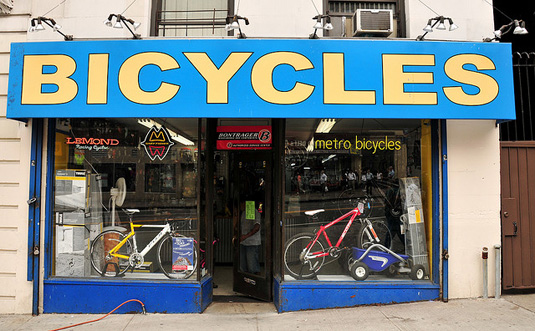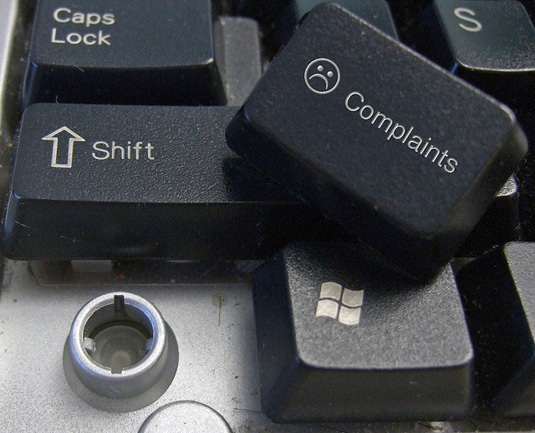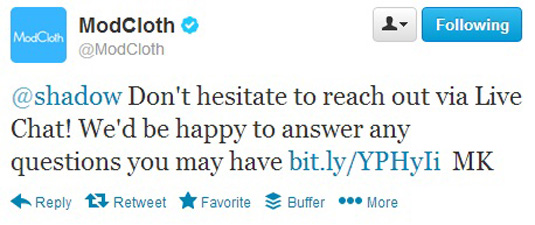
How well does your online marketing measure up against the competition? Do you know? When was the last time you actually checked?
One of the best ways to evaluate the effectiveness of your online marketing strategy is to see how your tactics and messaging compare to your competitors.
Benchmarking is at the heart of every one of my client engagements. It’s a way to identify specific and tangible examples and suggestions to help you make improvements and/or validate the things you’re already doing right.
What’s the best way to compare your local marketing against your competitors?
Identify your top three competitors
Who are they? Why are they on your list? You might find it hard to narrow down to only three in the beginning, but typically that’s going to make it so much easier for you to do some in-depth analysis.
Review their websites
Unlike a brochure or other print materials that can be difficult to get your hands on, websites are readily available and can provide a direct window into their marketing soul.
Be subjective. Try to take a step back and look at everything through the eyes of a prospective customer.
Is there anything that jumps out on their homepage? Think about first impressions. It could be their logo, their tagline, their navigation, etc. What are their key messages (ex. “Established 1975” or “Your hometown….”) and how do they compare to yours? Are they using images to showcase products and services effectively? What else could they improve?
Google your business
Use search terms you think customers would use to find you online.
When your business pops up, compare your meta description—the little blurb of text that appears under your business name and link on the results page.

Is your meta description more persuasive than your competitors? Less persuasive?
How can you make improvements to increase the likelihood that someone will actually click on your link?
Of course we can’t talk about Google without talking about SEO (search engine optimization). When it comes to your business being seen in the search results, you need to make sure you have all of the right blocking and tackling in place. This ecommerce SEO 101 video series from Shopify is a great place to start.
Review their social media presence
If they’re on Facebook, how are they using their cover photo to highlight their offerings? What types of content are they sharing (and how often)? Are people commenting and sharing their posts with others?
Don’t mistake social media “activity” for action. I see a lot of small businesses fixate on how many “Likes” or “Followers” they have on Facebook and Twitter—but ultimately neither of those mean anything if the “Likes” and “Followers” aren’t getting your phone to ring or getting people to buy your products.
Review online directory listings
Positive reviews on sites like Yelp and Foursquare can give your competitors a huge edge. If you only have a couple of reviews, encourage customers to check you out the appropriate platforms. Just be sure you follow their specific guidelines so you don’t violate any terms. With Yelp, for example, you can’t ask customers for reviews.
Make sure you claim your business listing if you haven’t already done so. Complete all of your profile information including your hours, services, forms of payment, etc. You’ll also want to add some photos to give your profile visual interest. That way when your business does appear in search results, you’ll be way more competitive.
The Benefits of Benchmarking
It’s difficult (if not impossible) to know how your business stacks up against the competition unless you periodically benchmark against your peers.
The sources mentioned above are just a few of the many places I look when performing an indepth online marketing analysis for my clients. And those sources will also help you identify what you’re already doing well, where you can make improvements, and how you can continue to differentiate your small business and your marketing efforts from your competitors.
In other words, it’s definitely worth your time.
How do you compare your local marketing against your competitors?
Share your thoughts in the comments below.
By: Shawn Graham
[Image: Flickr user Andrew E. Larsen]

Take a look at your storefront. What do you see? What do think your customers see?
Curb appeal is often one of the most overlooked ingredients for creating an amazing customer experience and that’s really unfortunate. It only takes a split second for people to form an impression, and that impression often starts when they’re driving by or pulling into your parking lot.
Working in retail management for a regional home improvement center when I was fresh out of college, I learned pretty quickly to pay just as much attention to the outside of our store as the inside. Our regional manager would make frequent and impromptu visits and I think it’s safe to say he was more than passionate about curb appeal. In fact, he was pretty much dialed in on every last detail—a mindset that’s stuck with me all those years later.
To this day, any time I go shopping I notice every burned out light bulb, trash can that needs emptied, cigarette butt in the crack of a sidewalk, and weed growing in the landscaping.
The most important step to improving your store’s curb appeal is finding the time to think strategically about what you need to do and then actually doing it. When you’re in a rush, it’s easy to miss or ignore quick fixes and potential problems.
Visible Exterior Signage
Your signage should be visible from the street (see example at the top of this post which you might be able to see from the outerspace!), parking lot, AND the sidewalk. Case in point, a new pizza shop just opened locally. From what I can tell, their name looks like etched glass—and it’s totally impossible to make it out from the highway. What is the chance that someone is going to pull in for a closer look? Zilch.
You also want to keep an eye out for any signs that have been faded by the sun. Either replace it or just take it down. In almost every case, having nothing is going to look way better than a raggedy old faded sign.
I’m a huge fan of sandwich boards. If you’re able to use one, it can be a great way to extend your signage beyond your storefront and really grab the attention of passersby—especially if you get a lot of foot traffic. You can showcase daily specials, or have some fun with it and do something clever.
Just yesterday, I saw a the perfect example on Twitter--a picture of a sandwich board with a message arranged in a flow chart asking “Is Everything Okay?” followed by “Yes” or “No.” Regardless of your answer, you were pointed to “Come and have a drink.” Creative and clever, you could just about say the same thing for a myriad of products or services. “Is Everything Okay?” “Come on in and get a haircut.”
I’m also a big stickler for store hours. If you want to test how good your eyesight is without having to see an optometrist, try to make out store hours for just about any business that has them displayed on their front door without leaving your car. I bet you can’t do it at least 75% of the time.
Creative Window Displays
If you’ve got them, flaunt them. Use window displays to provide a glimpse into your store and your product offerings and entice prospective customers to check you out.
Think about what you want to display and then experiment to see what looks best once you’re outside the store. Do your best to look through the eyes of your customers.
Once you have something in place, pay attention to whether it’s bringing more people in the door or helping you sell any more products. It can be the prettiest window display in the world but if it’s not helping you generate more business, it’s not working.
Regular Maintenance
There is literally no excuse to have trash cans overflowing right outside of your front door. None. The same holds true for weeds, burned out light bulbs, and any other items that could make your small business appear disheveled.
Take a walk around in the morning and look for anything that needs to be addressed. Do the same thing at night. If you need to hold off, say to call in a professional sign company to replace some bulbs, that’s okay—just don’t let it linger for months. The last thing you want is one letter in your sign to wink at people from dusk till dawn.
If you really want to create an unforgettable customer experience, don’t overlook the importance of curb appeal. Whether you know it or not, the outside appearance of your storefront is forming opinions (both good and bad) from the moment someone pulls into your parking lot—if not sooner.
By: Shawn Graham
[Image: Flickr user Ed Yourdon]

Shrink wrap? A cardboard box? Some of those annoying packing peanuts? When you think about product packaging, what’s the first thing that comes to mind?
For me, it’s all about the customer experience.
Anyone can throw items in a box (and by anyone I mean Amazon, Walmart, and every other big box retailer). But as a small business owner, you have a chance to make your product packaging something more—something amazing.
It’s those little touches--the unexpected details that get people excited about buying your products, make them want to tell others, and keep them coming back for more.
If you’ve ever received one of the packages I’m talking about or spoken with someone who has, you know exactly what I’m talking about.
Cookie Crowd makes ginormous gourmet cookies. Because they’re delicious, they could’ve just gone with some simple packaging. But they didn’t.
They added some yarn, included a tag with their name and website, and also make it possible to include a handwritten note along with your order (see image above). Something you’d expect to see at a fancy local bakery, not something you’d expect to get in the mail.
It’s been a few years since I received my first order and I still have one of the tags. That’s right, I kept a tag from their “Scout” cookie (their ultimate s'mores cookie) just to remind me of how awesome they were.
I’m going to go out on a limb and guess the cost of the yarn and the extra time it takes to put the finishing touches on their product packaging is far outweighed by the reaction they get from their customers.
MOO.com is my go-to source for premium business cards. Their quality is second to none. But what I love most about them is how they use their product packaging to create an amazing customer experience.
I’m already excited by the time I place my order. I don’t need any more convincing. I’m not going to suffer from buyer’s remorse. Yet, they still take the extra time to include whimsical messages that immediately bring a smile to my face.
Whether it’s a “Yay!” sticker on the outside of the box, or a slick little sleeve that says “Your moo mini cards are inside. Open them. Quick!” they’ve got me hooked. Want to see for yourself? Get a Free MOO Business Card Sample Pack

And of course I can’t talk about product packaging without mentioning the Nest Learning Thermostat.
Founded by two former Apple employees, they immediately understood the importance of creating an unforgettable customer experience—all the way down to their packaging. I don’t own a Nest (yet), but I did witness just how much of an impact their product packaging can have on one of their customers.
I was at the Apple Store chatting with one of the associates when he mentioned he was moving to California to work at Apple headquarters--the mother ship.
Unprompted, he said the thing he was going to miss most was his Nest Learning Thermostat. That’s when he started to go into a play-by-play about what it was like taking it out of the box for the very first time. How the thermostat was packaged and how excited he was as he opened it—they couldn’t pay for a better endorsement.
Here's a quick peek inside their product packaging...
It’s easy to think a customer’s experience is over once you make the sale. But that’s definitely not the case.
Your product packaging—from the way it’s shipped to the way your customers feel once they open the box—can be just as important as the product itself.
Small touches they’re just not going to get from Amazon and other big box retailers. Best of all, you don’t have to spend a ton of money. Just look at the examples from Cookie Crowd and MOO.com.
Product packaging is another reflection of your brand AND your small business.
How are you going to create an amazing customer experience?
Share your thoughts in the comments below.
By: Shawn Graham
[Images: Cookie Crowd; Flickr user: Linking Paths]
As a disclaimer, I use affiliate links for some of the products listed. They are all products I absolutely love and trust and would recommend regardless of whether they have an affiliate program.

Yesterday I stopped by a small locally-owned business.
After a few minutes chatting, the owner asked one really important question. One that every small business owner should ask every new customer.
Want to take a guess what that question was?
If you said “How did you hear about us?” you are correct.
As it turns out, I found him through the Better Business Bureau website—something they were actually thinking about discontinuing because they thought nobody saw it.
By asking that one simple question…just six simple words…he was able to get immediate and first-hand insights into how I found his business.
Talk about huge.
Instead of making inaccurate assumptions or random guesses, all you need to do is ask. The answer to that one simple question can help you understand your customers better and make more informed decisions about where you should be spending your time and your marketing dollars.
I know I can count on one hand how many times I’ve been asked that as a first-time customer. In this case, they assumed the Better Business Bureau website wasn’t working for them when, at least in our case, it was. All they need to do is ask a few more first-time customers and they can start to identify a trend.
Don’t assume you know where your customers are coming from.
Every phone call, email, and face-to-face conversation is a chance for you to gather real-time insights directly from your target audience. When it comes to marketing, it usually doesn’t get much better than that.
Once you gather enough feedback, use that information to help determine where you focus your time and attention. You just might just find something you thought wasn’t working was actually working quite well.
Best of all, asking won’t cost you a thing!
By: Shawn Graham
[Image: Flickr user Kelly Teague]

Customer complaints on social media are totally unavoidable. It’s how you handle them that makes all the difference.
When done right, you can quickly resolve the situation and win over a happy customer. When done wrong, you can quickly find yourself in a heated argument for all of your social media followers to see.
What’s the best way to respond to frustrated customers on social media? Let’s take a look.
Monitor your social media mentions
You can’t just assume complaints are going to come during normal business hours. Here, a customer tweeted ModCloth at 10:30pm. That doesn't mean you have to respond around the clock, but it does mean you always have to be listening.

Whether you encourage customers to share customer service concerns via social media or not, you’ve always got to pay attention to what people are saying about your business online.
I know things can get hectic, but you want to make sure you check your social media chatter at least once daily (ideally multiple times throughout the day).
Read More > In the age of social media no response is not an option
To make sure you don’t miss anything, you can use resources such as mention for real-time social media alerts so you can react quickly.
You can also set up push notifications for each of your profiles so you receive an email notification once someone engages with you via social media. Although those can get annoying fast if you get a lot of traffic.
Respond Quickly
72% of consumers expect brands to respond to complaints posted on Twitter within an hour, that according to a study by Lithium.
Even though ModCloth got the initial tweet late at night, they still responded right around 10:00 am the next morning.
Read More > Using social media to break into your local market
Regardless of whether you think that’s unrealistic or not, more and more customers are expecting businesses to respond to complaints on social media fast.
Move the Conversation Offline
The single biggest mistake small businesses make when trying to handle customer complaints via social media is not taking the conversation offline. No matter how great your customer service is, you don’t want to run the risk of things spiraling out of control.
Here, ModCloth encouraged the customer to reach out via LiveChat online chat software.

If you don’t have the bandwidth to offer something similar, you can point them to a contact form, ask them to direct message you via social media, etc.
Close the conversation loop
In this case, luckily the customer wasn’t all that upset. He was able to get better shipping for less money. As he put it, he was “All smiles."

What I love about this example is that ModCloth still responded one more time to close the loop…

Looking for more case studies on handling customer complaints on social media?
Here's an example of what can go wrong when you don't take the conversation offline.
By: Shawn Graham
[Image: Flickr user findyoursearch]
More Entries »











